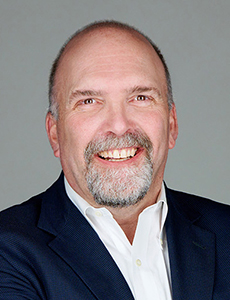Insurance Lessons Over Time from Quadrant’s Mark Harris
It is said that history is cyclical and destined to repeat itself. That certainly has held true in some industries more than others. Take fashion — in the 1970s high waisted pants and bell bottoms were the rage and today they have returned appearing on runways, in department stores, and online. Thankfully, many of the styles like double denim, shiny polyester shirts, and leisure suits have not yet reappeared.
But there are some things that will never make a return; they had their time and place. In some cases that is a good thing, in others it is because the world has changed too much, and in a few cases, you pray they will never happen again. I’ll let you decide.
Insurance was and is still a relationship industry, but how deals used to get done is nothing like it is today. Back in the 1970s, working at AIG and training as an underwriter, deals were solidified over lunch in Lower Manhattan, a few drinks, and good conversation. Once agreed upon, they were typically jotted on cocktail napkins and later formalized. These terms were honored by both parties, though I can’t say if the cocktail napkins were ever challenged in court.
The commute to NYC daily was a grind but the work at AIG, extremely interesting. Most importantly, I was training with experienced “supervising underwriters” and working on accounts from all over the globe. We underwrote department stores in Australia, manufacturers in in Southeast Asia, and machine parts manufacturers from all over Europe. Our largest group of insureds was what we called Home/Foreign (American companies doing business overseas).
At AIG, our work as underwriters was scrutinized and never more so than when called into a group meeting by the boss, Hank Greenberg. Mr. Greenberg was and still is an amazing role model in his ability to manage a huge corporation, a multitude of people, and in exhibiting a work ethic we all aspired to. When called in to his presence, you had better be prepared. He likely knew all your accounts better than you, and that applied to all his direct reports called in at any random time.
Though the floppy disc was invented in 1971, “technology” in the 1970’s was mainly rooted in rotary dial telephones, bulky tube television sets, and large mainframe computers. “AI” was non-existent—either as Additional Insured or Artificial Intelligence.
During this time, I learned to analyze submissions, compose underwriting notes, and justify my decisions—skills of true value that are today rapidly being replaced by technology. Additionally, I became proficient in drafting messages for TELEX machines, a rudimentary precursor to the internet that allowed us to globally connect.
Every day offered a new opportunity to learn, and I always tried to pick up something new. AIG offices across the country collaborated, sharing data to help improve our underwriting decisions. Our team researched, developed core knowledge bases, and honed our analytical skills learning from successes but even more from failures—as painful as they might be.
One evening at dinner with several reinsurance underwriters, we discussed excess GL (15M xs 10M) for an animal feed manufacturer. They ended up writing a quota share excess layer as part of our excess quote—a big win or so it seemed.
Well, the feed manufacturer had a sister company that made a fire-retardant chemical product which shipped in a bag very similar to the cow feed. And the chemical pellets themselves resembled the cow feed pellets. What could possibly go wrong?
To start, the fire-retardant pellets were inadvertently shipped to a state farm bureau and from there were distributed to farms as “feed”. Animals ate the chemical pellets, became sick, and had to be destroyed, resulting in a significant claim.
It only got worse. Herds of cows were buried in fields, decomposing in the ground and the fire-retardant chemical seeped into the water table. A second claim was made as new herds of cattle drank from the polluted ponds and had to be put down.
End of story? I wish. The contaminated water raised health concerns for people and a third claim emerged. Though there was nothing any of us could have done to prevent this series of events, I felt responsible. Reinsurance seriously reduced our internal exposure, but I felt lucky not to be terminated.
I never had as big of a loss on my watch, and I never wrote another animal feed manufacturer again.
Fast forward to 1975, though 9/11 was years away and resulted in the death and loss of associates, friends, and family, I narrowly missed a different tragedy by chance. It was January 24, 1975, and Fraunces Tavern was bombed during the lunch rush. The Puerto Rican nationalist group “Fuerzas Armadas de Liberacion Nacional” claimed responsibility though no one was ever charged. Four business executives were killed and many others injured.
We were scheduled to meet General Re for lunch at the tavern on that day, only to be delayed by a report that needed to be completed before lunch. It was a sobering event that has never left me.
Grateful is the word that most frequently comes to mind these days. There is very little I would change and am thankful I experienced the tremendous growth of the insurance industry and rode every wave into the present times.
So much of the industry is reliant upon what was built decades ago, and I’d like to think the human factor will never lose its relevance. Personally, and globally, we tend to rise and fall cyclically. But some things will never return in the same way. Today, cocktail napkins are simply coasters for your drinks and deals now are made over the phone, texts, or through social media.
However, progress aside, please, can we leave styles like double denim, shiny polyester shirts, and leisure suits in the past? &










